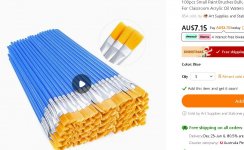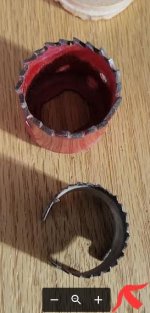Packard
Member
There are certain things I will buy from Harbor Freight, and certain things that I won’t.
Their “acid brushes” are perfect for gluing and are 36 for $2.99. I keep a good supply on hand.
These were designed for acid flux applications for plumbing (soldering), but are the perfect disposable glue brush.
I pour a little glue into a disposable 2 ounce resin condiment cup and paint on the glue from there. The condiment cups have lids, but I don’t store glue in them. I did drill a hole in a small piece of MDF as a holder for those cups after I knocked one over and spilled the glue. The holder also as a groove to hold the glue brush.

https://www.harborfreight.com/12-in...-brushes-36-piece-61880.html?_br_psugg_q=acid+brush
Their “acid brushes” are perfect for gluing and are 36 for $2.99. I keep a good supply on hand.
These were designed for acid flux applications for plumbing (soldering), but are the perfect disposable glue brush.
I pour a little glue into a disposable 2 ounce resin condiment cup and paint on the glue from there. The condiment cups have lids, but I don’t store glue in them. I did drill a hole in a small piece of MDF as a holder for those cups after I knocked one over and spilled the glue. The holder also as a groove to hold the glue brush.

https://www.harborfreight.com/12-in...-brushes-36-piece-61880.html?_br_psugg_q=acid+brush




